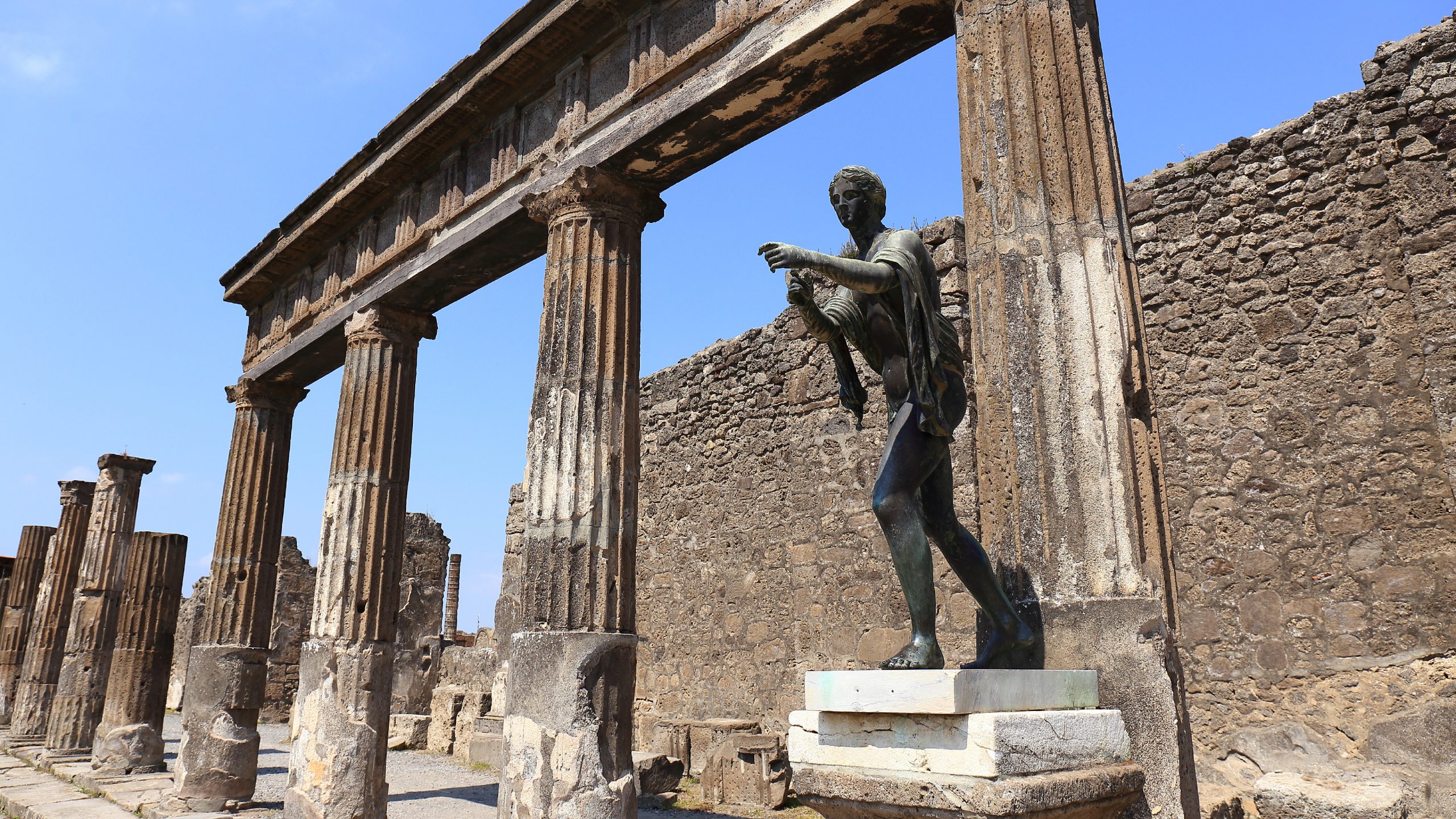Not so many places are as fascinating and full of true mystery as the ancient city of Pompeii, a few miles from Naples in southern Italy, which in 79 a.d. was destroyed by the sudden eruption of Vesuvius. Historical sources tell us that the tragedy occurred in October and not, as long believed, on August 24. But this is an insignificant detail compared to the scope of the tragedy that history has delivered to us. Paradoxically, the death of so many people and the end of the city’s life, a beautiful and rich village at the time of the catastrophe, has sadly gifted us with one of the most incredible pages in world archaeology.
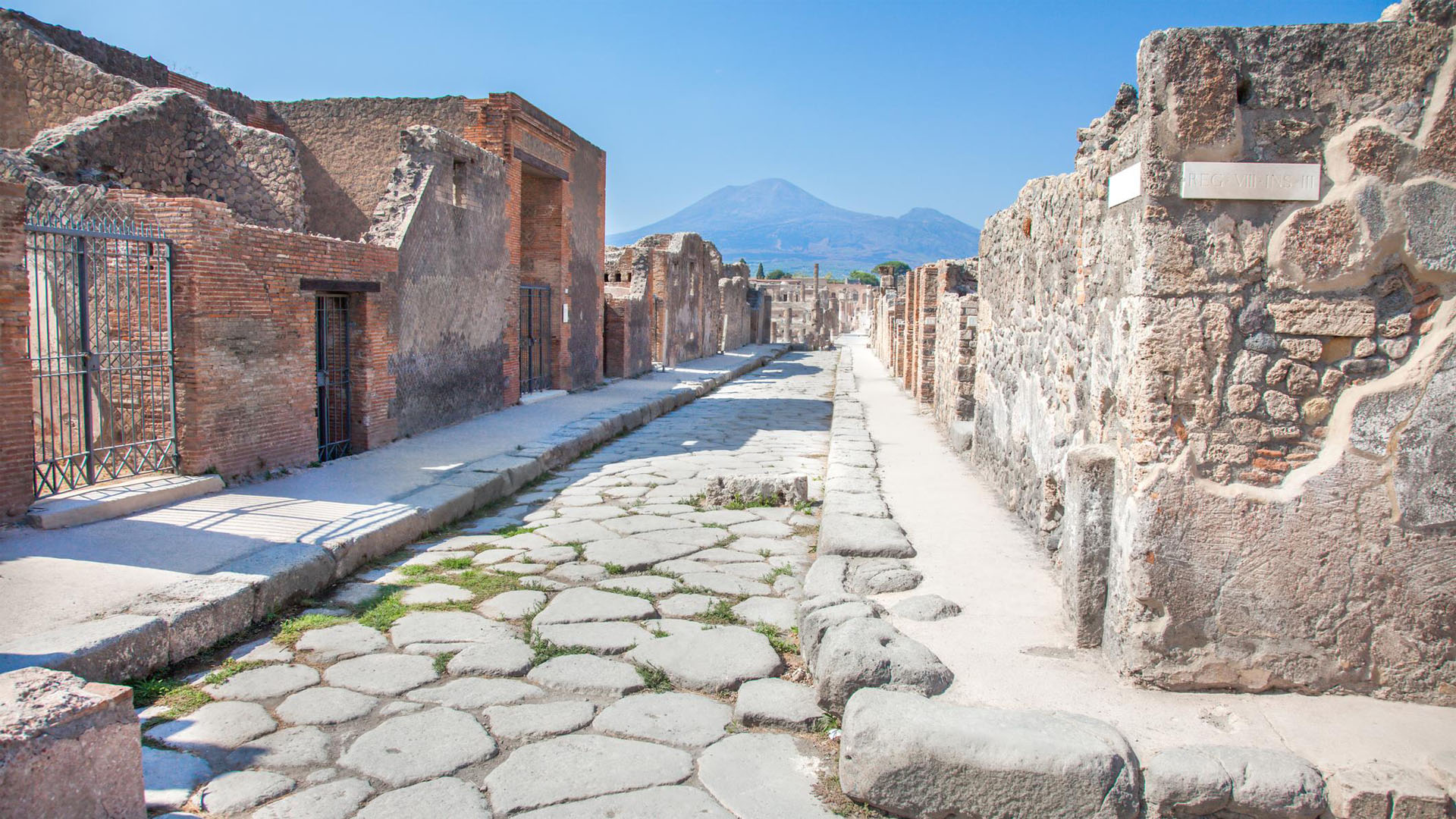
Entering Pompeii today is surreal. So much is intact that you expect men and women to appear from their homes and go through the streets of the city performing their daily actions such as entering a taberna (shop) to get a haircut or buy a pair of shoes. Or stop in what is considered the first diner ever, the thermopolium (derived from the Greek and called thermopoly in Italian, formed from the words meaning “hot” and “sell”).
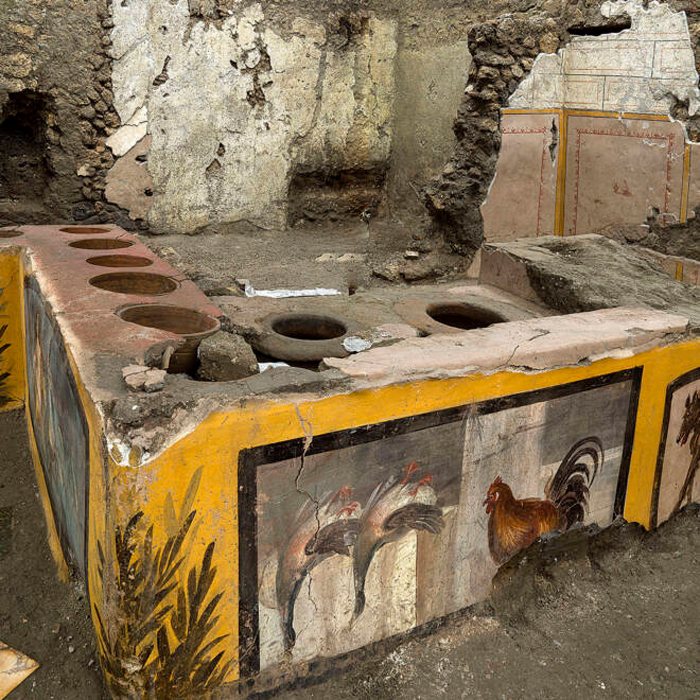
The thermopolium was a place of refreshment in use in ancient Rome, where it was possible to buy and consume hot drinks and sometimes even ready-to-eat dinners of pork, fish, snails, or beef. Typical menus consisted of coarse bread with salty fish, baked cheese, lentils, and spicy wine. It’s amazing to learn that archaeologists working at one of the sites also found duck bone fragments and crushed fava beans, which were used to alter the taste of wine. Such restaurants were frequented by poorer residents of Pompeii who rarely had their own kitchen at home.
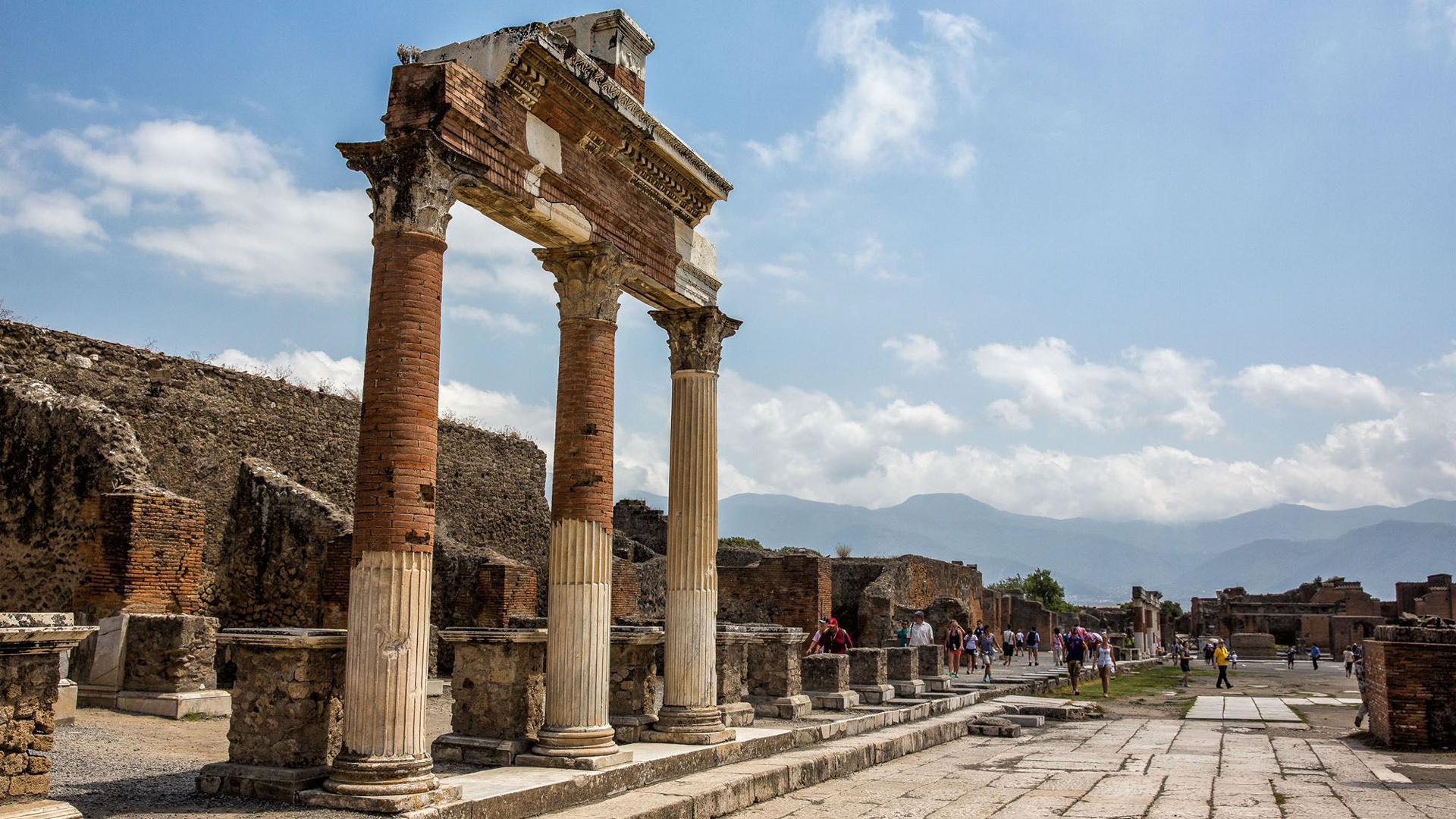
All life stopped in Pompeii within a few hours, leaving everything about daily life 2,000 years ago clear for us to see, as if through live reporting. We can see the streets, apartments, baths, theaters, gladiatorial gyms, the Forum—the heart of the civil and economic life of every Roman city—and the red-light district!

Stunning and refined villas reveal the ancient Romans’ love for luxury, architectural harmony, and idleness that allows for a creative and restful lifestyle. The most famous and well preserved is the Villa of the Mysteries. This dwelling is named after the hall of mysteries located in the residential part of the building, which faces the sea. A large continuous fresco that covers three walls, one of the most preserved ancient paintings, depicts a mysterious right reserved for the devotees of the cult. The scene is linked with Dionysus, who appears on the central wall with his wife, Ariadne.
Female figures as well as fauns, maenads, and winged figures are seen on the side walls, engaged in various ritual activities. Besides the Dionysian ecstasy expressed in dancing and drinking wine, one sees the ritual flagellation of a young woman resting on the lap of a seated woman, part of the rites.
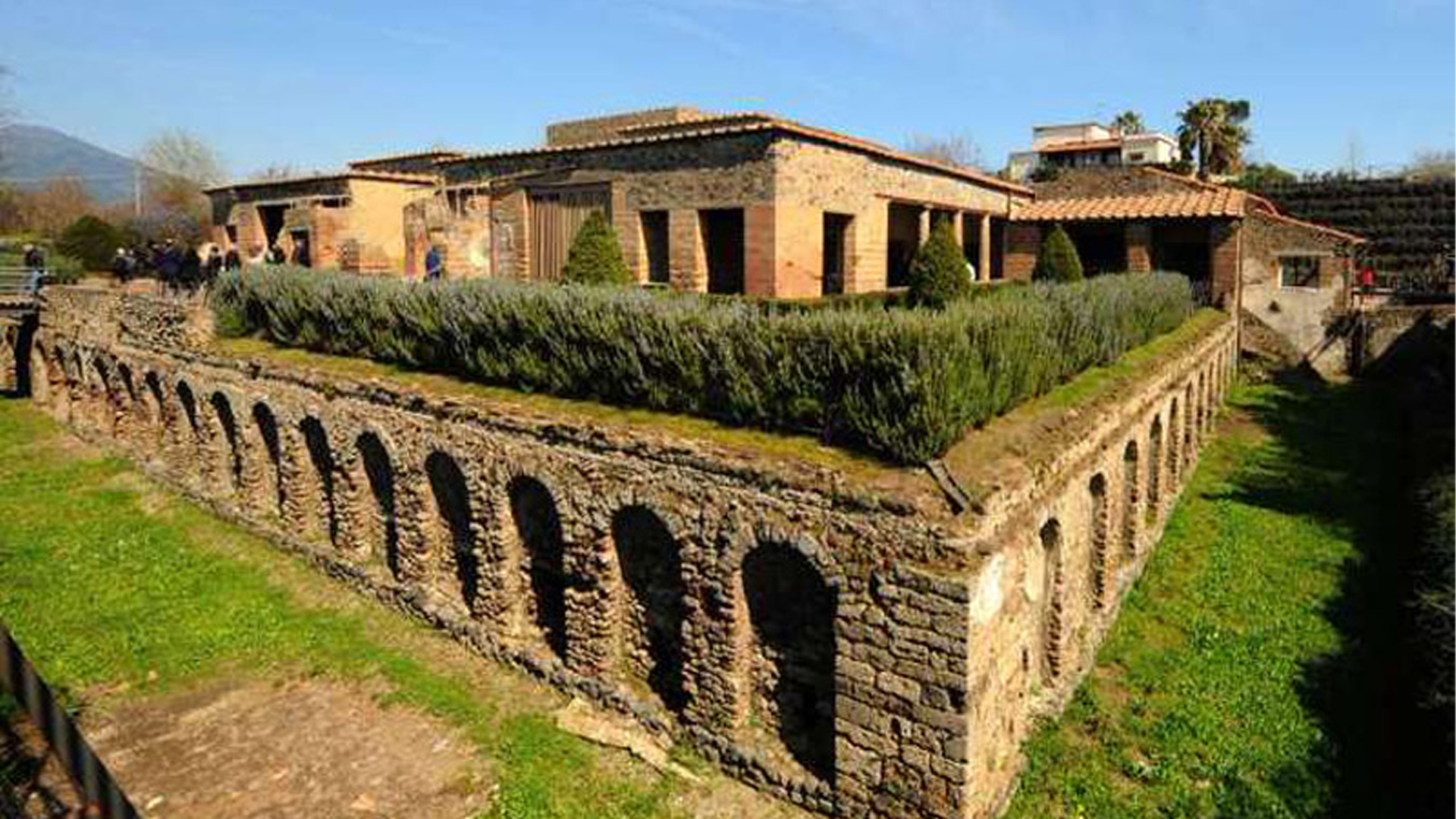
The other rooms also preserve wonderful examples of decoration devoted to depictions of architecture. Egyptian-inspired miniature paintings are seen in the tablinum. The villa also includes an area intended for the production of wine with a rebuilt wooden press. The complex dates back to the second century b.c. but was given its current shape in 80-70 b.c., the same period of the frieze of mysteries.
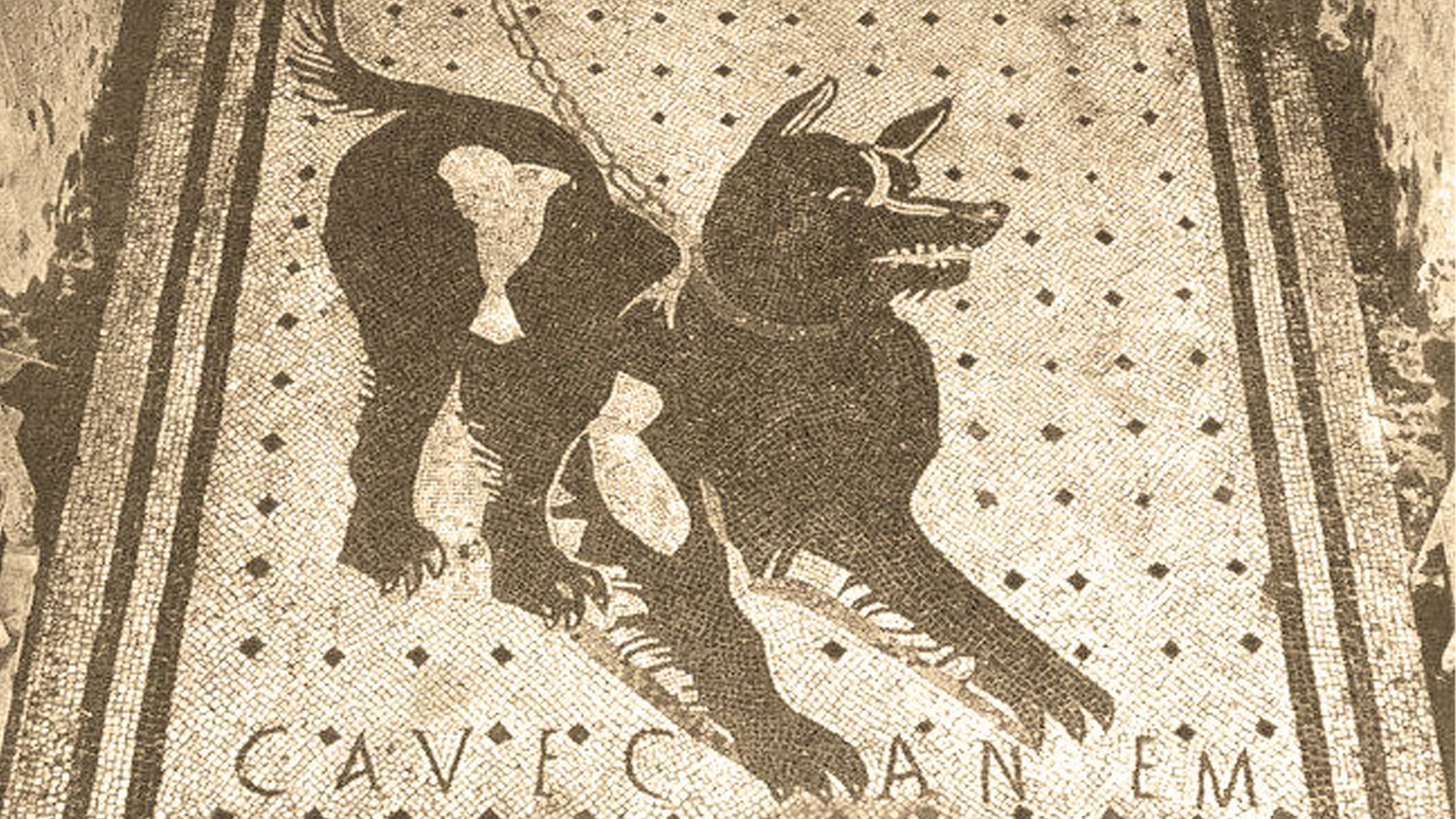
But ordinary life is made of ordinary things, so you cannot leave Pompeii without visiting the House of the Tragic Poet, named for one room’s fine mosaic showing actors preparing for a play. The real fame of the home, however, is the mosaic showing a leashed dog with the inscription Cave Canem (“Beware of the dog”) at the main entrance. Somehow, this mosaic makes the first century seem not so far away. Today, of course, you can buy a doormat depicting this famous Pompeii mosaic and inscription for your own entryway!
Barbara Benzoni
Barbara Benzoni was born in Milan and lives between Rome and Tuscany. She is devoted to USA, the land of courage and innovation. She’s Peter's super-lucky mum and Ale's wife. Cinema, art, good food and only beautiful things are the themes of her existence. With a degree in Italian literature and a Masters in Sports Management she can both enjoys books and basketball matches. In 25 years she has been organizing sport events all over the world and she’s been lucky enough to meet the greatest champs ever. Curiosity in everyday life and people are her drivers. Her personal icon is Mohammed Ali : "It's not bragging if you can back it up".

